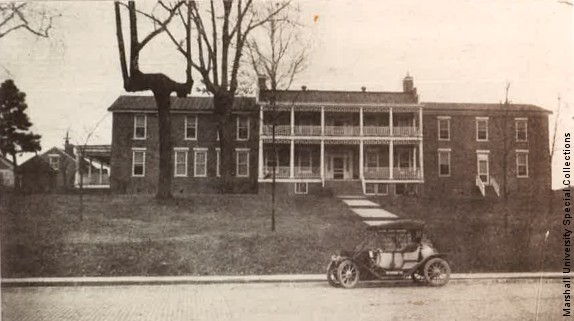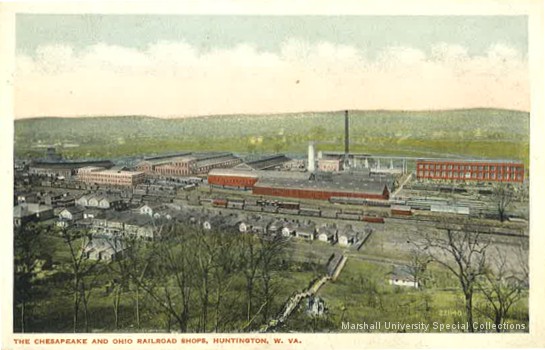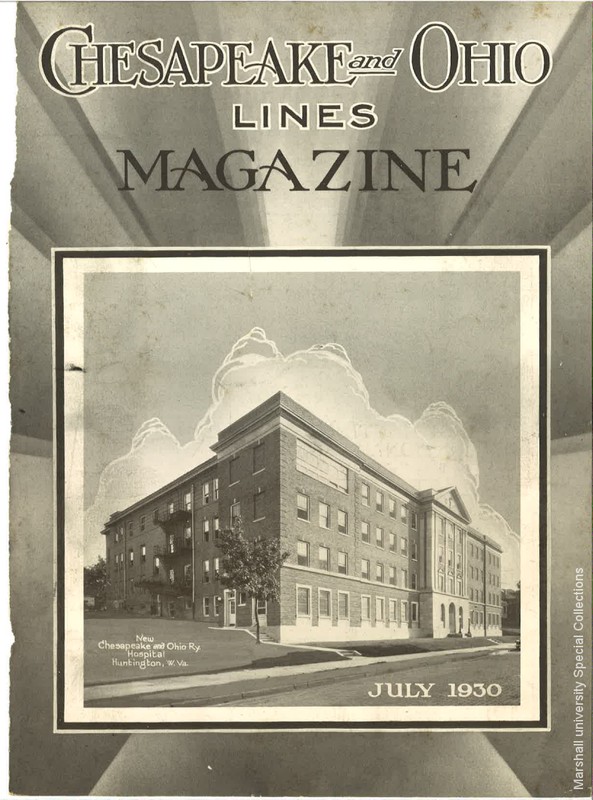C&O Hospital, 1900-1917
Introduction
Text-to-speech Audio
Images
C&O Hospital Postcard

C&O Hospital

C&O Rail Station

C&O Railroad Shops

Chesapeake Magazine

Dr. R.J. Wilkerson, C&O physician

Backstory and Context
Text-to-speech Audio
The Chesapeake and Ohio Hospital Association was established and organized on November 1, 1897. The C&O Railroad established hospitals throughout its rail line to provide the railroad’s workers and families with healthcare and medicine at little cost. The hospitals maintained separate units for African-American workers. A dispensary for prescriptions was established in Huntington, West Virginia in 1897.
The Huntington C&O Hospital opened in 1900 in a home located on 6th Avenue and 18th Street. Rising demand for medical services allowed for the construction of a new building for the Huntington C&O Hospital across the street from the old facility. The new hospital was four-stories tall with a basement. It maintained eighty beds. The old hospital building received renovations and became an annex for the African-American ward, the contagious ward, kitchens, staff dining rooms, incinerators, and laundry rooms. The Huntington C&O Hospital contained an x-ray department, an obstetrical floor, laboratories, private examination rooms, an otolaryngology (ear, nose, and throat) department, and pharmacy. The medical staff of the Huntington C&O Hospital compiled reports of the hospital, including patient ailments and treatments, and published these as The Bulletin of The Staff of The Chesapeake and Ohio Hospital of Huntington, West Virginia.
The Huntington C&O Hospital also maintained a training school for nurses. Applicants to the nursing school were required to be educated women between the ages of 18 and 35. The nursing school consisted of three years of instruction through lectures, demonstrations, and classes. The nursing students received training in surgical, medical, and gynecological care. The nursing school was affiliated with the Cincinnati General Hospital in Cincinnati, Ohio, which allowed senior students to complete four months of training in pediatrics and obstetrics at that institution.
The C&O Hospital system worked well to provide the railroad’s employees with affordable healthcare until 1960 when quality healthcare became more accessible so that the employees did not have to travel long distances to be treated at company hospitals and with the closure of rail passenger service on C&O lines, employees could no longer use the company’s free passes to travel to C&O hospitals. After the Huntington C&O Hospital closed, the building remained vacant. In 1971, the building became the Doctors’ Memorial Hospital in honor of physicians Ray R. Hagley, H.D. "Pete" Proctor, and Joseph E. Chambers who lost their lives in the 1970 Marshall University plane crash. Three years later the building was used to house Marshall University’s newly established medical school. As new facilities were built for the school, the old C&O Hospital building was no longer needed. The building was demolished in 2001 to provide parking spaces for Marshall University students.
Cite This Entry
Trowbridge, David J., Jennifer Gehringer, and Clio Admin. "C&O Hospital, 1900-1917." Clio: Your Guide to History. March 29, 2016. Accessed April 26, 2025. https://theclio.com/tour/1145/9

